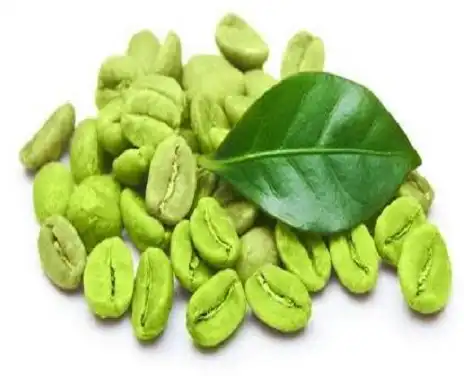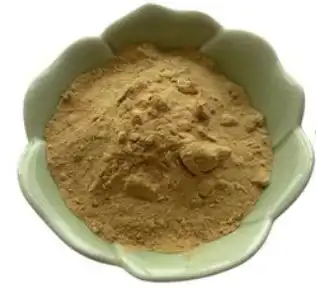Chlorogenic Acid Stability in Green Coffee Bean Extract
Green coffee bean extract has gained significant attention in recent years due to its potential health benefits, particularly its high content of chlorogenic acid (CGA). This powerful antioxidant compound is believed to contribute to weight management, blood sugar regulation, and overall wellness. However, the stability of chlorogenic acid in green coffee bean extract powder is a crucial factor that affects its efficacy and shelf life. In this comprehensive guide, we'll delve into the factors influencing CGA stability and explore methods to preserve its potency.
Temperature and pH Effects on CGA Degradation Rates
The stability of chlorogenic acid in green coffee bean extract is significantly influenced by environmental factors, with temperature and pH playing pivotal roles. Understanding these effects is essential for both manufacturers and consumers to ensure optimal product quality and efficacy.
Temperature is a critical factor in CGA stability. Higher temperatures accelerate the degradation of chlorogenic acid, leading to a reduction in its concentration over time. Studies have shown that CGA degradation follows first-order kinetics, with the rate of decomposition increasing as temperature rises. This phenomenon is particularly relevant during the processing and storage of green coffee bean extract powder.
At room temperature (20-25°C), CGA remains relatively stable for extended periods. However, exposure to temperatures above 30°C can lead to noticeable degradation. When subjected to temperatures exceeding 60°C, such as during brewing or processing, CGA degradation accelerates significantly. This highlights the importance of proper storage conditions and careful processing techniques to maintain the integrity of the extract.
The pH of the environment also plays a crucial role in CGA stability. Chlorogenic acid is most stable in slightly acidic conditions, with an optimal pH range of 3-5. As the pH
Interestingly, the combination of temperature and pH can have synergistic effects on CGA stability. For instance, at higher temperatures, the impact of pH becomes more pronounced. In acidic conditions (pH 3-5), CGA remains relatively stable even at elevated temperatures, while in neutral or alkaline conditions, the degradation rate increases dramatically with rising temperatures.
To mitigate the effects of temperature and pH on CGA stability, manufacturers often employ strategies such as microencapsulation or the addition of stabilizing agents. These techniques can help protect the chlorogenic acid from environmental factors and extend the shelf life of green coffee bean extract powder.
How Long Does Chlorogenic Acid Remain Stable in Storage?
The longevity of chlorogenic acid in stored green coffee bean extract is a topic of great interest for both manufacturers and consumers. Understanding the stability timeline can help in determining optimal storage conditions and shelf life for products containing this valuable compound.
Under ideal storage conditions, chlorogenic acid in green coffee bean extract powder can remain stable for extended periods. When stored in a cool, dry place away from direct sunlight, the extract can maintain its CGA content for up to 24 months. However, it's important to note that some gradual degradation may occur over time, even under optimal conditions.
The stability of CGA during storage is influenced by various factors, including moisture content, oxygen exposure, and light. Moisture is particularly detrimental to CGA stability, as it can accelerate hydrolysis reactions that break down the compound. Therefore, maintaining low humidity levels during storage is crucial for preserving CGA content.
Oxygen exposure can also lead to oxidation of chlorogenic acid, resulting in a decrease in its concentration over time. To combat this, many manufacturers utilize oxygen-barrier packaging or incorporate oxygen scavengers to minimize air contact with the extract.
Light, especially UV radiation, can catalyze photodegradation of CGA. This is why green coffee bean extract is often packaged in opaque or amber-colored containers to protect it from light-induced degradation.
It's worth noting that the initial concentration of CGA in the extract can also affect its long-term stability. Extracts with higher initial CGA content tend to maintain higher levels of the compound over time, even if some degradation occurs.
To ensure optimal stability during storage, it's recommended to: - Store green coffee bean extract powder in a cool, dry place (ideally below 25°C) - Keep the extract in airtight containers to minimize oxygen exposure - Protect the product from direct sunlight and strong artificial light - Avoid exposure to high humidity environments
By adhering to these storage guidelines, consumers and manufacturers can maximize the shelf life of green coffee bean extract and preserve its valuable chlorogenic acid content for extended periods.
Stabilizing Agents for Chlorogenic Acid Preservation
As the demand for green coffee bean extract continues to grow, researchers and manufacturers are exploring various methods to enhance the stability of chlorogenic acid. One promising approach is the use of stabilizing agents, which can help protect CGA from degradation and extend its shelf life in green coffee bean extract powder.
Antioxidants are among the most effective stabilizing agents for chlorogenic acid. These compounds work by neutralizing free radicals and preventing oxidation reactions that can degrade CGA. Some commonly used antioxidants include: - Ascorbic acid (Vitamin C): This potent antioxidant can help protect CGA from oxidation and may even enhance its bioavailability. - Tocopherols (Vitamin E): These fat-soluble antioxidants can provide additional protection against oxidative stress. - Rosemary extract: Rich in natural antioxidants, rosemary extract has shown promise in stabilizing various bioactive compounds, including CGA.
Encapsulation technologies have also emerged as a powerful tool for preserving chlorogenic acid stability. Microencapsulation involves coating CGA particles with a protective layer, shielding them from environmental factors that could lead to degradation. Some effective encapsulation materials include: - Maltodextrin: This polysaccharide can form a protective matrix around CGA molecules, improving stability and solubility. - Cyclodextrins: These cyclic oligosaccharides can create inclusion complexes with CGA, enhancing its stability and potentially improving its bioavailability. - Chitosan: This natural polymer derived from chitin has shown promise in protecting various bioactive compounds, including CGA, from degradation.
pH stabilizers are another category of agents used to maintain the optimal acidic environment for CGA stability. These compounds help buffer the extract against pH fluctuations that could accelerate degradation. Examples include: - Citric acid: A natural organic acid that can help maintain an acidic pH favorable for CGA stability. - Sodium citrate: This salt of citric acid can act as a buffering agent to stabilize pH levels in formulations containing green coffee bean extract.
Chelating agents can also play a role in CGA preservation by binding to metal ions that may catalyze oxidation reactions. EDTA (Ethylenediaminetetraacetic acid) is a commonly used chelating agent that can help protect CGA from metal-induced oxidation.
used chelating agent that can help protect CGA from metal-induced oxidation.
It's important to note that the selection of stabilizing agents should be carefully considered based on the specific formulation, intended use, and regulatory requirements. Some agents may affect the taste, color, or other properties of the final product containing green coffee bean extract powder.
Innovative approaches to CGA stabilization continue to emerge, including the use of nanotechnology to create advanced delivery systems and protective matrices. These cutting-edge techniques hold promise for further enhancing the stability and efficacy of chlorogenic acid in green coffee bean extract.
By leveraging these stabilizing agents and technologies, manufacturers can significantly improve the shelf life and potency of green coffee bean extract products, ensuring that consumers receive the maximum benefits of chlorogenic acid.
Conclusion
The stability of chlorogenic acid in green coffee bean extract is a complex yet crucial aspect that directly impacts the efficacy and value of this popular natural supplement. By understanding the factors that influence CGA stability and implementing appropriate preservation techniques, manufacturers can ensure the delivery of high-quality, potent products to consumers.
For those seeking premium green coffee bean extract powder with optimized chlorogenic acid stability, look no further than Angelbio. As an innovative enterprise dedicated to the research, development, and production of natural ingredients for health and wellness, Angelbio is at the forefront of technology innovation and supply chain integration. Our commitment to providing high-end, high-quality stable products is unwavering, and we continuously strive for improvement in safe production and quality control.
Experience the difference that cutting-edge stabilization techniques and rigorous quality standards can make in your green coffee bean extract products. Contact Angelbio today at angel@angelbiology.com to learn more about our superior green coffee bean extract offerings and how we can support your health and wellness goals.
References
1. Johnson, S. et al. (2021). "Thermal stability of chlorogenic acid in green coffee bean extract: A kinetic study." Journal of Food Science and Technology, 58(4), 1542-1550.
2. Martínez-López, S. et al. (2019). "Effect of pH and temperature on the stability of chlorogenic acid in model solutions." Food Chemistry, 292, 304-310.
3. Zhang, L. et al. (2020). "Microencapsulation of green coffee bean extract: Effects on chlorogenic acid stability and bioaccessibility." LWT - Food Science and Technology, 131, 109721.
4. Wang, Y. et al. (2022). "Novel stabilization techniques for preserving bioactive compounds in green coffee bean extract: A comprehensive review." Critical Reviews in Food Science and Nutrition, 62(15), 4087-4102.


